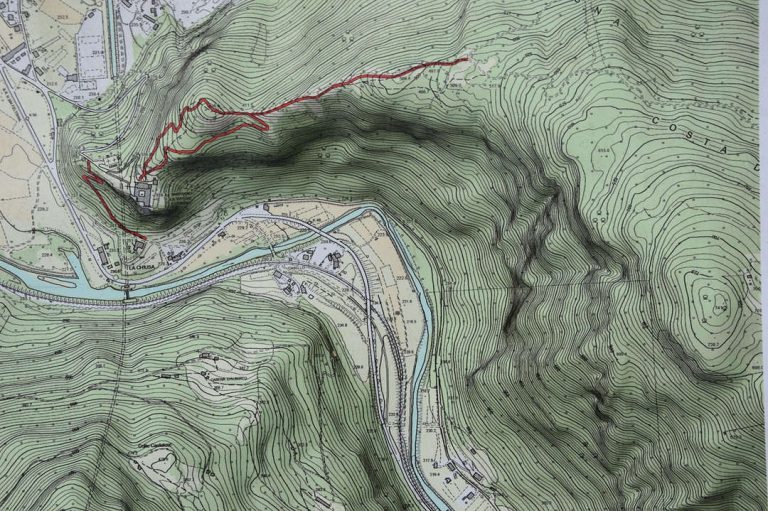The Ultimate Guide to Drilling and Blasting
Drilling and blasting, also known as drill and blast, are powerful tools used to break and excavate rock in various industries, including mining, quarrying, and construction.
This technique involves strategically drilling holes into the rock and then using explosives to break it into manageable pieces. While seemingly straightforward, drilling and blasting is a complex process requiring expertise, careful planning, and strict safety protocols.
This article delves into the intricate world of drilling and blasting, exploring its applications, processes, and the crucial role it plays in various industries.
We'll uncover the nitty-gritty of this technique, from the initial drill to the final blast, equipping you with a comprehensive understanding of this dynamic process.
What is Drilling and Blasting?
Drilling and blasting (DBM) is a controlled method used to break rock for excavation purposes. It's a traditional and effective technique employed in various applications, including:
- Mining: Extracting valuable minerals and ores.
- Quarrying: Obtaining stone and other building materials.
- Civil Engineering: Creating tunnels, roads, dams, and other infrastructure projects.
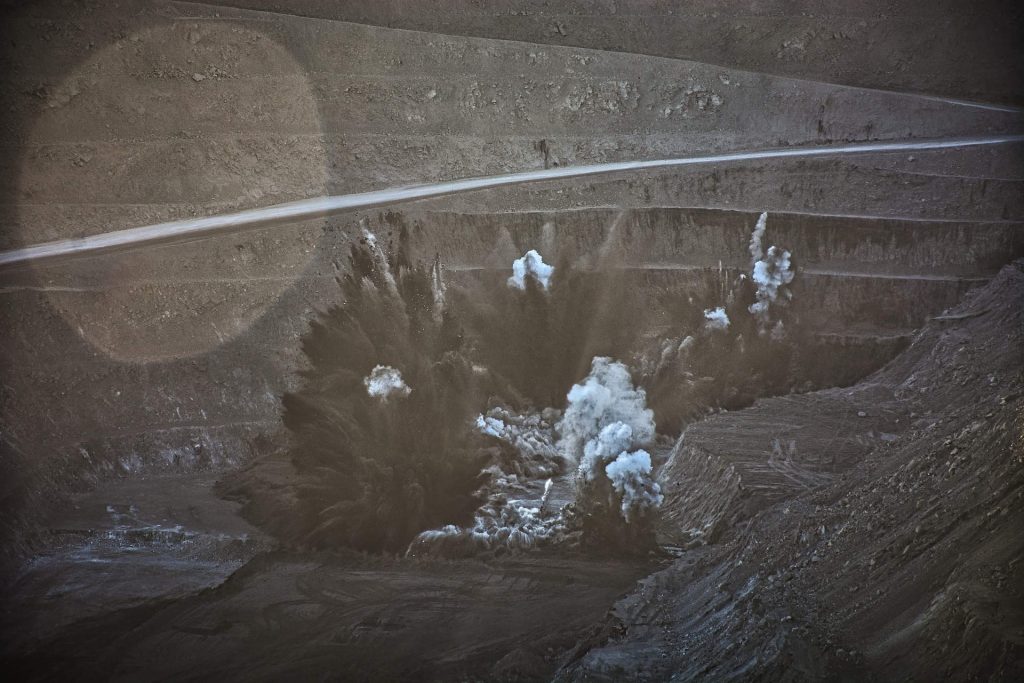
What is the Process of Drilling and Blasting?
The typical cycle of excavation by blasting involves a well-defined sequence of steps to ensure safety, efficiency, and successful rock fragmentation.
1. Drilling
Specialized mobile platforms called jumbos dominate the initial stage. These machines boast three powerful manipulators functioning as drilling arms and a central operator console for meticulous control. Jumbos are typically tethered to an electrical grid for power.
A critical component is a high-pressure water supply that feeds pneumatic drifters. This pressurized water enables the drill bits to efficiently rotate and hammer the rock face, creating designated cylindrical cavities (boreholes) ranging from 2.4 to 3.6 meters in length.
The number, depth, and precise orientation of these boreholes are meticulously planned based on the desired fragmentation outcome for efficient rock removal and the need for geotechnical stability to ensure the integrity of the surrounding rock mass.
The configuration of the boreholes, known as the drilling pattern, also plays a crucial role. Common patterns include:
- Square Pattern: Offers equal spacing and burden (distance between boreholes and the rock face) with rows aligned directly behind each other.
- Rectangular Pattern: Similar to the square pattern, but with a larger spacing between boreholes compared to the burden.
- Staggered Pattern: Boreholes in each row are offset, creating a honeycomb-like pattern. This optimizes fragmentation while minimizing burden.
- Equilateral Triangle Pattern: Similar to the staggered pattern, but with a specific spacing-to-burden ratio for efficient rock breakage.
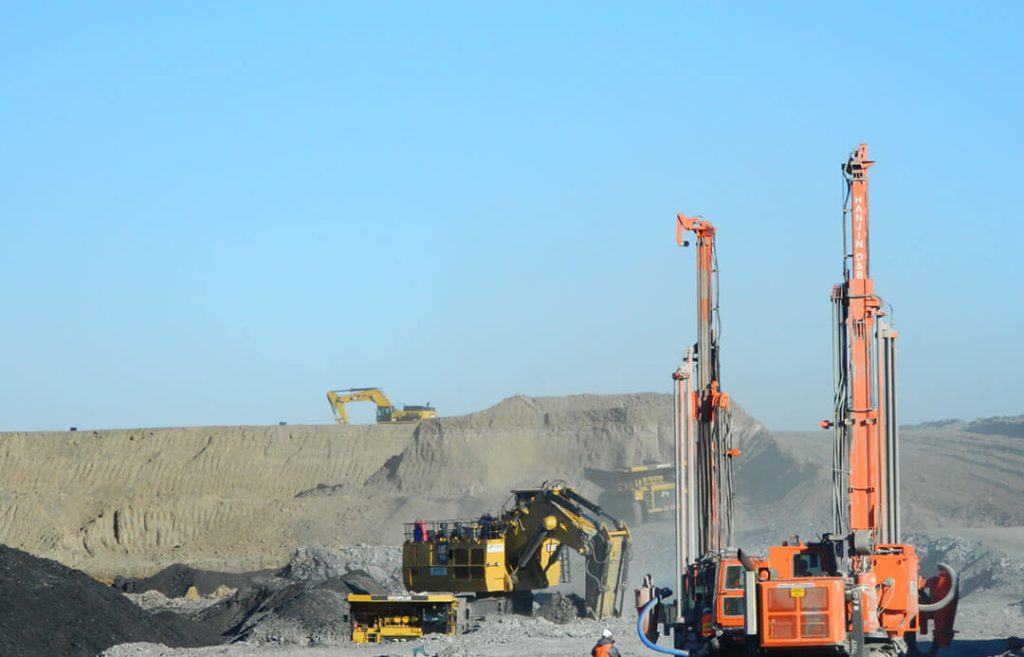
2. Explosive Charging
Once the drilling is complete, it's time to load the boreholes with the right explosives. The type of explosive chosen depends on the rock's characteristics. Common options include:
- Dynamite Variations: Traditional dynamite is still used in some cases, but it's often replaced by safer and more controllable options like ammonium nitrate fuel oil (ANFO) mixtures.
- Water Gels: These gel-like explosives are popular due to their water resistance, making them suitable for wet environments. They also tend to produce fewer fumes compared to traditional dynamite.
- Emulsions: Water-in-oil emulsions offer good blasting performance and are less sensitive to shock and fire compared to other explosives.
To minimize the inherent risks associated with explosives, mechanized charging equipment is extensively used. This ensures the safe and controlled placement of the explosive materials within the boreholes.
Detonators are attached to each explosive device and subsequently interconnected to form a predetermined blasting sequence. Civil and structural engineers leverage advanced telemetry systems to monitor potentially hazardous areas during this crucial stage, further strengthening safety measures.
3. Blasting
Controlled blasting, a common technique that minimizes overbreak (excess rock breakage) and ground vibrations, ensures clean excavations and protects surrounding structures from damaging tremors.
- Pre-Splitting: Creates a clean fracture plane using a single row of precisely placed and detonated holes, minimizing overbreak in the main blast.
- Smooth Blasting: Used in underground mines, this method involves detonating lightly charged holes along the final excavation line after the main blast, creating a smooth and stable wall with minimal overbreak.
- Cushion Blasting: Similar to smooth blasting, the holes are backfilled with crushed rock to absorb the shockwave and further minimize damage to the final wall.
Detonation order is crucial. Blasts are carefully sequenced, typically starting from the center and moving outwards. This ensures optimal rock fragmentation while minimizing vibrations. Precise timing between detonations further refines control, focusing the energy release.
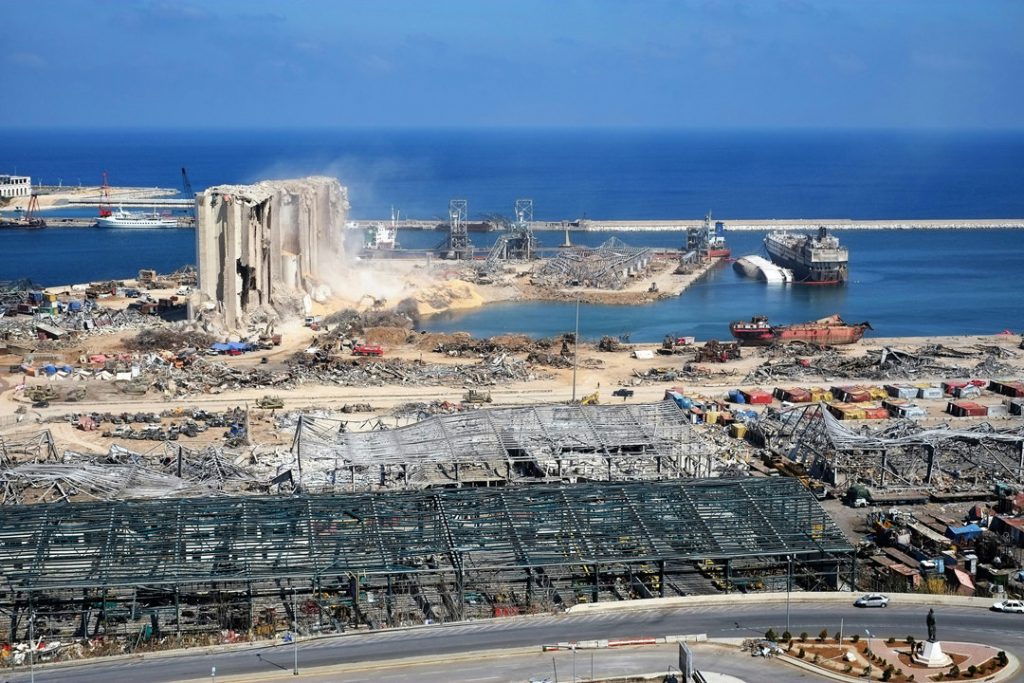
4. Ventilation
Explosions generate significant dust clouds mixed with combustion gases. Ventilation becomes essential to ensure worker safety and a healthy working environment.
Long steel or plastic pipes are used as air ducts. These are often attached to the tunnel's roof and strategically positioned to blow fresh air onto the working face, effectively removing dust and fumes.
Mucking and Scaling
After blasting, the fragmented rock, referred to as muck, needs to be removed. This process involves loading the broken rock into hauling vehicles like dump trucks and transporting it out of the excavation area.
Following the initial clearance, a process called scaling is crucial. This involves removing any loose pieces of rock from the crown (ceiling) and walls to prevent potential rockfalls and ensure worker safety.
Ground Support Installation
As the tunnel excavation progresses, the newly exposed ceiling and side walls require support to prevent rock falls and ensure tunnel stability.
Several methods are employed for ground support, depending on the specific site conditions. Common options include Rock bolts or dowels: These are long, slender steel bars drilled into the rock and secured with a mechanical wedge or adhesive to reinforce the rock mass.
- Shotcrete: A layer of sprayed concrete is applied directly to the rock surface to provide immediate support and strengthen the surrounding rock mass.
- Ribs or mining arches and lagging: These are prefabricated steel frames used to create a temporary support structure within the tunnel.
- Cable bolts: High-strength cables are grouted into boreholes and anchored behind the rock face to provide additional support and reinforcement.
- In-situ concrete: This technique involves casting concrete within the excavated space to create a permanent and robust tunnel lining.
Drilling and Blasting vs. Tunnel Boring Machines (TBM)
Building tunnels is a crucial aspect of modern infrastructure development. When it comes to creating these underground pathways, two main methods dominate the scene: Drilling and Blasting and Tunnel Boring Machines (TBM). Each method offers distinct advantages and limitations, making a well-informed choice vital for project success.
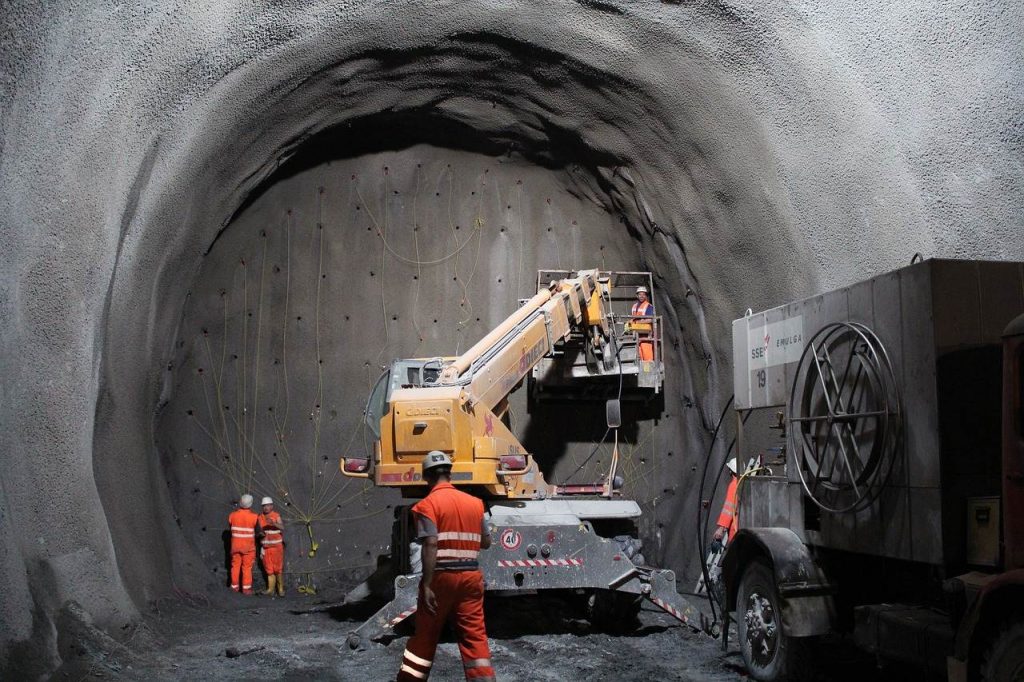
Drilling and Blasting
Drilling and blasting involves meticulously drilling holes into the rock face, strategically placing explosives, and detonating them in a controlled manner to break the rock. The fragmented material is then removed.
Advantages:
- Adaptability: The drill and blast method shines in tackling various tunnel shapes and sizes, making it suitable for complex geometries and changing diameters.
- Unforeseen Conditions: It caters well to unexpected geological surprises encountered during excavation.
- Cost-Effective: Drilling and blasting often require a lower initial investment compared to TBMs.
Disadvantages:
- Speed: The Drill & Blast technique's progress can be slower due to the repetitive cycle of drilling, blasting, and muck removal.
- Overbreak: The blasting process can cause fractures beyond the intended excavation line, leading to wasted material and requiring additional support measures.
- Environmental Impact: Vibrations and dust generated during blasting pose challenges in populated areas.
- Safety: The Drill & Blast method inherently involves handling explosives, demanding highly skilled personnel and stringent safety protocols.
Tunnel Boring Machines (TBM)
TBMs are colossal machines equipped with rotating cutting heads that grind and shear the rock face. The excavated material is continuously removed on a conveyor belt.
Advantages:
- Speed: TBMs boast impressive excavation rates, especially in good rock conditions, significantly reducing project timelines.
- Precision: TBMs deliver a smooth, near-perfect tunnel profile, minimizing overbreak and the need for additional support.
- Environmental Impact: TBMs generate less vibration and dust compared to the drill and blast method, making them ideal for urban environments.
- Safety: A large portion of the excavation occurs within the controlled TBM environment, enhancing worker safety.
Disadvantages:
- Flexibility: TBMs are primarily designed for circular tunnels with consistent diameters. Complex shapes or changing diameters can be challenging.
- Cost: The initial investment in acquiring and operating a TBM is significantly higher than drilling and blasting.
- Ground Conditions: TBMs perform best in stable and predictable rock formations.
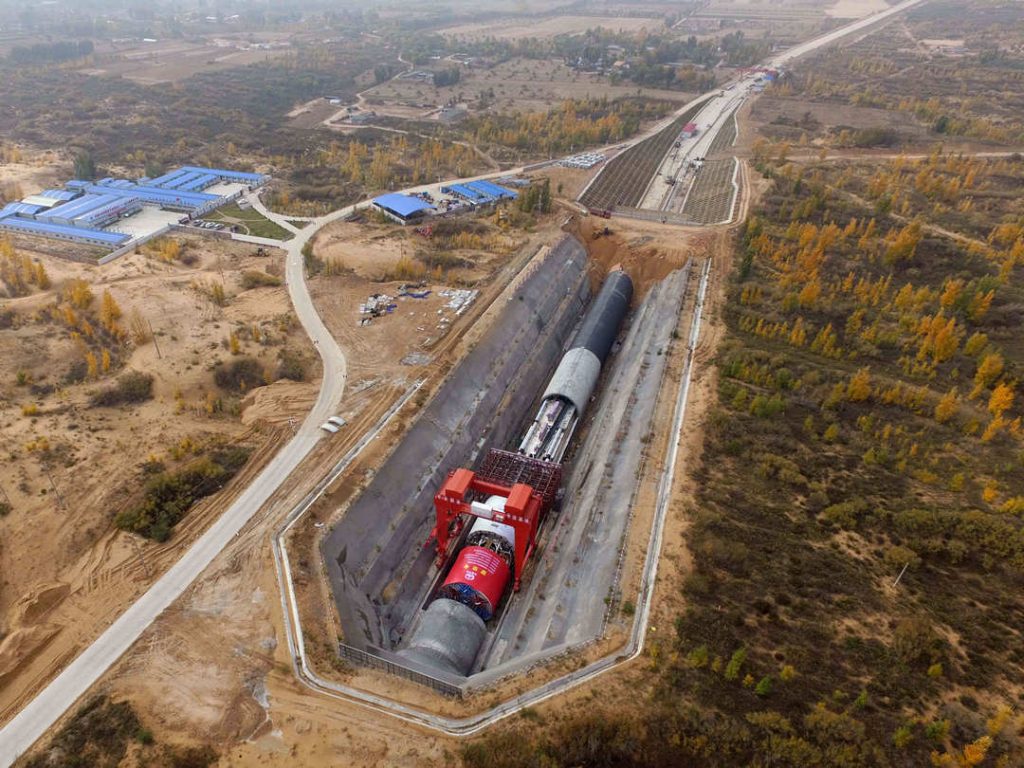
Making the Right Choice:
Selecting the optimal method hinges on several crucial factors:
- Project Size and Shape: The drill and blast method is better suited for shorter tunnels and non-uniform shapes, while TBMs excel in longer, circular tunnels.
- Rock Conditions: Stable rock formations favor TBMs, while drill and blast can adapt better to unforeseen geological variations.
- Environmental Constraints: In populated areas, TBMs are preferred due to their lower environmental impact.
- Budget: Drilling and blasting techniques often have a lower upfront cost, while TBMs might require a higher initial investment but can potentially recoup the cost through faster completion times.
Challenges of Traditional Drilling and Blasting
In today's competitive construction and mining landscape, efficiency and safety are paramount. However, traditional drilling and blasting methods can introduce hidden delays and significant safety risks, impacting project timelines and worker well-being. Let's delve into the key challenges:
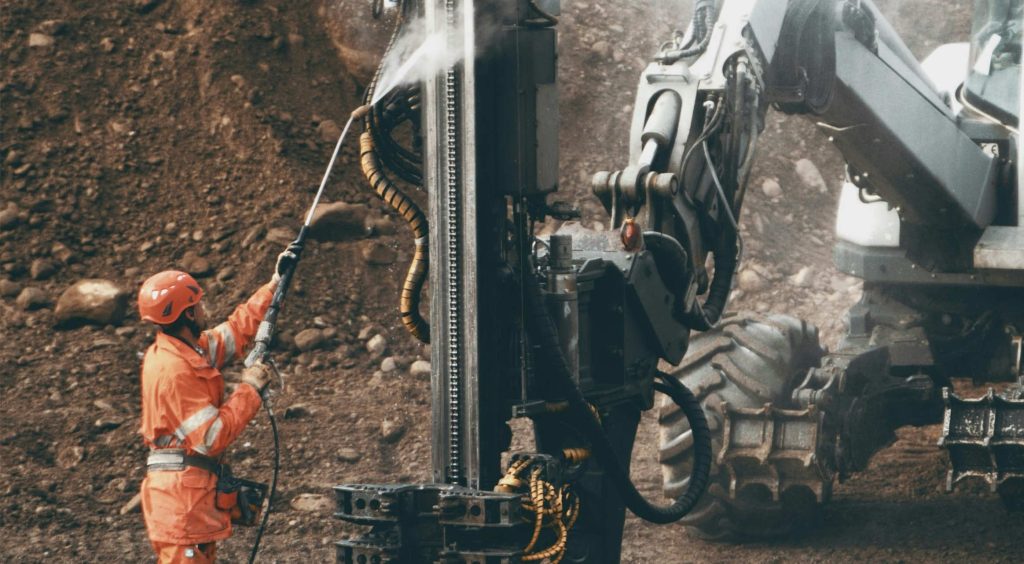
Blind Spots and Breakdowns
Blasting inherently carries the risk of flying debris (flyrock), ground vibrations, and toxic fumes. Strict adherence to safety protocols, including proper blast design, exclusion zone management, and misfire prevention, is paramount.
However, human observation alone has limitations in identifying all potential hazards. Visual inspections may miss hidden pockets of gas trapped within the rock face, which can lead to dangerous explosions.
Relying solely on line-of-sight observation for exclusion zone clearance can leave personnel vulnerable to flyrock ejected from the blast.
Additionally, traditional methods for verifying blast design accuracy often involve manual calculations and paper-based workflows, which are prone to human error.
Reactive Monitoring and Incomplete Data
Traditional monitoring methods often involve collecting data after the blast, such as fragmentation size (rock size after blasting) and blast vibration levels. This approach is time-consuming and reactive.
Identifying issues like improper detonation timing, misfires, or incomplete fragmentation after detonation can lead to delays in subsequent blasting rounds and require costly rework.
Additionally, relying on static vibration monitoring stations positioned at specific locations may not capture the full impact of ground vibrations on nearby structures or communities.
Downtime Dilemmas and Inefficient Fragmentation
Safety protocols necessitate clearing the blast zone of all personnel and equipment before detonation. This creates downtime and impacts efficiency.
Additionally, achieving optimal fragmentation size during blasting is crucial for efficient downstream processing in crushers and mills.
Traditional methods for assessing fragmentation rely on manual measurements after the blast, which can be inaccurate, slow, and prone to human error.
Limited Environmental Oversight and Community Concerns
Drilling and blasting can generate significant dust and noise pollution, potentially impacting nearby communities and violating environmental regulations.
Traditional methods of monitoring these factors often rely on static monitoring stations positioned at specific locations.
This approach may not capture the complete picture of dust dispersion or noise propagation throughout the blasting area.
Imagine a scenario where a blasting operation in a rural area generates unexpected dust plumes that travel further than anticipated, reaching a nearby town and causing health concerns for residents.
Static monitoring stations positioned at predetermined locations might miss this crucial information.
How Drones Revolutionize Drilling and Blasting?
Accurate, real-time data is the cornerstone of safe and efficient drilling and blasting operations. This is where drones come in - offering unparalleled precision by capturing detailed aerial imagery and enabling proactive, data-driven decision-making throughout the blasting process.
The JOUAV CW-25E VTOL Drone is a perfect solution, boasting a class-leading 240-minute flight time for extended missions, high-precision RTK and PPK capabilities, advanced safety features, and a 6 kg payload capacity with customizable options for cameras, thermal imaging, and sensors to meet any project requirement.
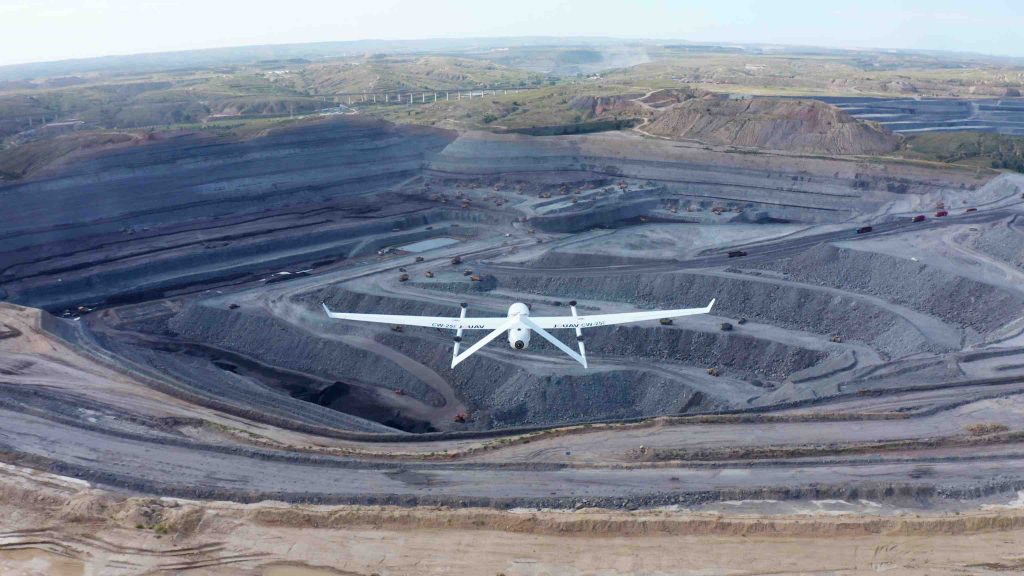
Let's explore the specific applications of drones in drilling and blasting:
Enhanced Safety Through Remote Inspections
Drones equipped with high-resolution cameras and thermal imaging can be deployed remotely to conduct thorough inspections of drilling equipment in hazardous or hard-to-reach areas.
A thermal drone can detect overheating components before they fail, allowing for preventative maintenance and minimizing downtime.
Imagine a confined mine shaft: a drone can be sent in to inspect a drill head for wear and tear or abnormal heat signatures.
Early detection allows for timely repairs, preventing a major breakdown that could halt operations for days.
Pre-Blast Surveys and Design Optimization for Maximum Safety
Drones equipped with high-definition cameras provide a detailed aerial view for pre-blast surveys, surpassing human observation capabilities.
This allows for the identification of potential hazards like unstable rock formations, cracks or voids, and misplaced explosives.
Additionally, specialized drone software can analyze the captured 3D point cloud data to identify potential flaws in the blast design or areas where the blast may not break as planned.
This comprehensive approach ensures operators are complying with safety protocols and minimizes the risk of accidents, protecting workers and surrounding infrastructure.
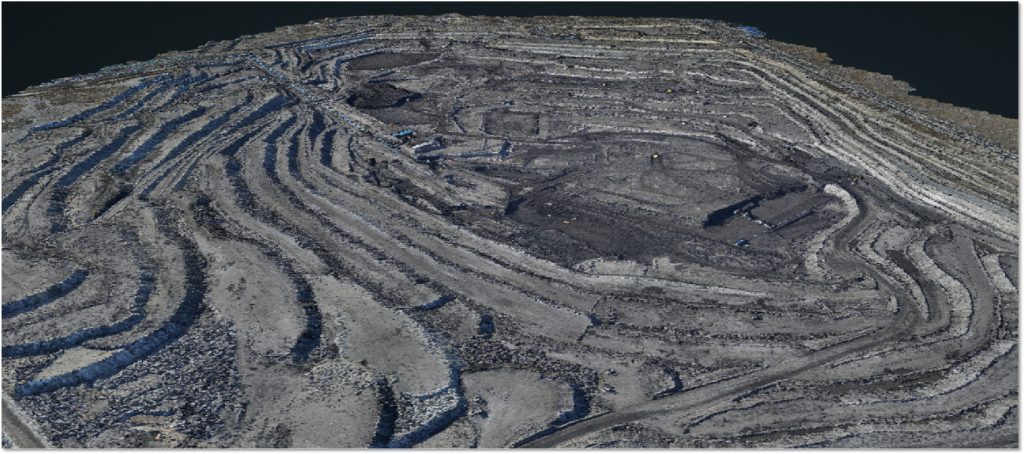
Real-Time Monitoring for Optimized Blast Performance
High-definition gimbal cameras on drones capture the blasting process from various angles, providing valuable real-time data.
This data can be analyzed to identify any issues with blast execution, such as improper detonation timing or misfires.
Blast vibration sensors mounted on drones capture real-time vibration data throughout the blast zone, allowing for immediate adjustments to future blasts to minimize environmental impact.
For example, analyzing post-blast footage may reveal improper fragmentation due to insufficient explosive placement.
This information can be used to refine the blast design, optimize blasting performance, and minimize the need for rework.
Faster Return to Work and Precise Fragmentation Analysis
Drones can be used to quickly and safely clear vast blast zones before detonation, eliminating the need for personnel to enter potentially hazardous areas.
Imagine a large open-pit mine: a drone efficiently clears the zone, allowing crews to return to work faster.
Furthermore, drones capture detailed post-blast images used with specialized software to analyze fragmentation size with high accuracy.
This allows for a faster assessment and ensures optimal fragmentation for efficient downstream processing, reducing costs associated with secondary blasting or equipment breakdowns due to oversized rocks.
Environmental Responsibility with Targeted Mitigation
Drones equipped with dust and noise sensors can create detailed maps of these factors surrounding the blasting site.
Consider a blasting operation near a residential area. A pre-blast drone survey with dust sensors can identify the potential dust dispersion pattern based on wind direction.
This allows the blasting crew to implement targeted mitigation strategies, such as deploying dust suppressants or adjusting the blast timing to minimize the impact on the community.
Similarly, noise sensors can map noise propagation, ensuring compliance with noise regulations and minimizing disruption.
Drone-based monitoring data provides clear and transparent reports to regulatory bodies and communities, demonstrating the blasting operation's commitment to environmental responsibility.
What Are the Safe Procedures for Blasting?
While drones offer incredible benefits for drilling and blasting, safe blasting practices remain the foundation. Here's a breakdown of the key safety procedures to follow before, during, and after blasting operations:
Before the Blast
- Qualified Supervision: A designated "Blaster-in-Charge" (BIC) with the proper training and experience must oversee all blasting activities.
- Site Inspection: Conduct a thorough inspection of the blasting site to identify potential hazards and environmental concerns.
- Blast Plan Meeting: The BIC must convene a meeting with the entire blasting crew to review the blast plan, including:
- Safe loading and detonation procedures
- Blast timing and schedule
- Blast direction and designated safe area
- Person responsible for detonation and their designated safe location
- Communication protocols between BIC and security personnel
- Emergency procedures, including misfire response plans
- Placement and visibility of cautionary signs
- Clearing and Guarding
- Safety Zone: Establish a secure safety zone around the blast area with designated guards at every entry point.
- Constant Communication: The BIC must maintain constant radio communication with all personnel throughout the clearing and guarding process.
- Final Preparations: Once the area is secure, the BIC attaches the primary initiation device 5 minutes before detonation.
- Warning Sirens: A 5-minute warning siren is followed by a 1-minute warning siren to alert everyone of the impending blast.
- Detonation: The BIC or a designated shot-firer detonates the explosives.
During the Blast
- Red Flag Warning: A red flag marks the blast area for everyone's safety.
- Safe Distance: All personnel must evacuate to a minimum distance of 200 meters from the detonation site.
- Whistle Warning: A shrill whistle is blown before initiating the blast using a fuse.
- Skilled Professionals: Only skilled and experienced professionals should conduct blasting operations.
- Safe Detonation Distance: Blasts must occur at least 200 meters from any existing structure unless authorized by an engineer.
- Safety Procedures: Established procedures for drilling, loading, and disposal of explosives according to regional and national regulations must be followed.
After the Blast
- Post-Blast Inspection: After ensuring safe air quality, the BIC inspects the blast site for:
- Hazardous rock conditions
- Undetonated explosives or initiators
- Any misfires or other dangerous situations
- Safety Clearance: Once the area is free of hazards, the BIC signals "all clear" and relieves the security personnel.
- Lightning Protection: A dependable lightning detector is used to monitor for potential electrical storms.
- Misfire Response: In the event of a misfire, specific protocols must be followed, including:
- Using a knife to cut the safety fuse at an angle
- Clearing sawdust from the detonator interior
- Blowing or gently tapping to remove sawdust (never using metal instruments)
- Sealing the fuse-detonator junction with approved waterproofing material if water is present
- Properly positioning the detonator and safety fuse in the cartridge
- Using waterproof fuses in wet boreholes
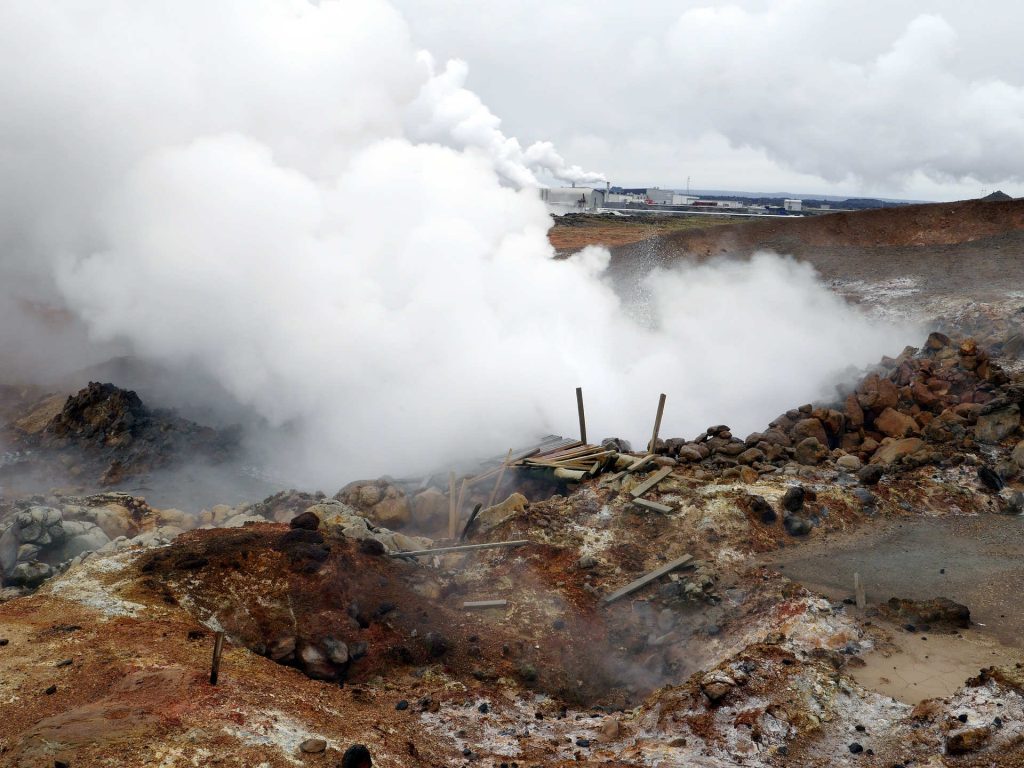
Blast Emergency Plan
Every blasting site requires a customized emergency plan addressing:
- Posting of emergency contact information (medical help, OSHA, MSHA, fire department, police)
- Clear communication and understanding of the plan by all personnel
- Notification procedures and timelines
- Location of first-aid kits and trained medical personnel
Blast Reports
Each blast requires a comprehensive report documenting:
- Blast date, time, and location
- Weather conditions (wind direction and speed)
- Blast geometry (hole size, depth, pattern, number of holes, bench height, sub-drilling)
- Blast hole loading details (typical loads, explosive types, primers, detonator delays, stemming, total explosives used)
- Blast volume and powder factor calculations
- Initiation timing schemes
- Blast effect monitoring data (ground vibration and air pressure measurements)
- Blasting results
- BIC's name and signature
How Much Does it Cost to Drill and Blast Rock?
The cost of drilling and blasting can vary from $3.00/m³ to $150/m³ depending on the location and relationship to buildings. For example, small diameter drills (115mm and less) can cost around $20,000/month to operate, which would add up to $1000/day if you drill and $1500/day if someone else drills.
The cost of drill and blast services at a mine can also change from month to month based on the following factors: ground condition, availability of ground to drill, mine sequencing, weather (wet holes), and hardness of the ground.
What Kind of Engineers Are Involved in the Process of Drilling and Blasting?
In the process of drilling and blasting, several engineering disciplines play crucial roles, each contributing to a safe and efficient operation. Here's a breakdown of the key engineers involved:
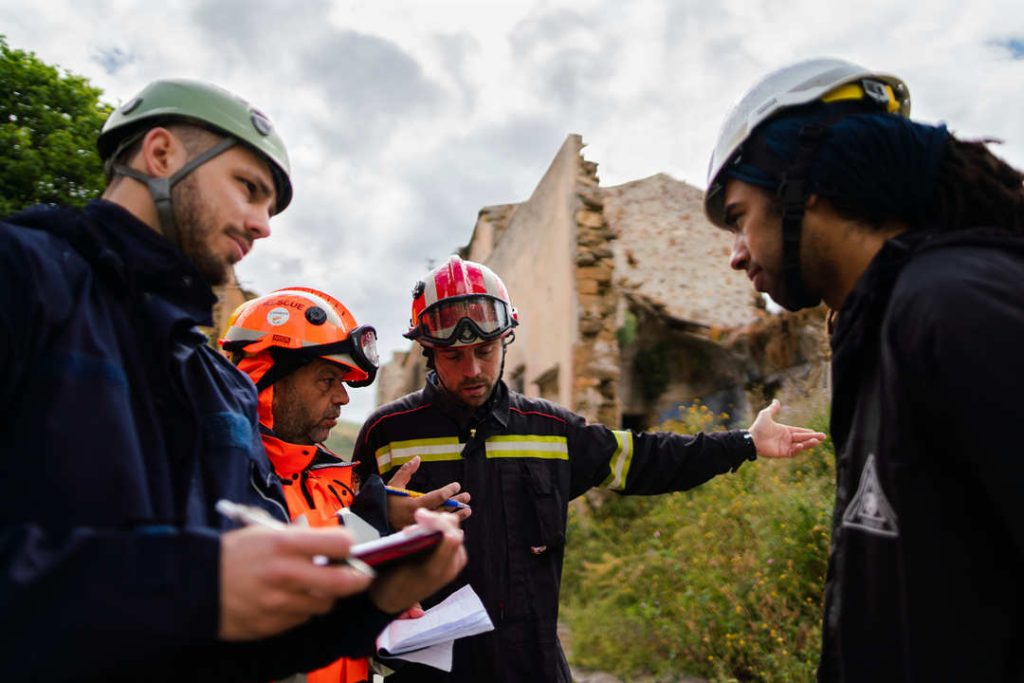
Civil Engineers
Civil engineers are often the lead role in drilling and blasting projects, particularly in construction applications. They are responsible for the overall design and planning of the blasting operation, considering factors like:
- Site layout and excavation needs
- Blast design and fragmentation requirements
- Surrounding structures and potential impact
- Safety protocols and exclusion zones
- Environmental considerations (dust, noise, vibration control)
- Waste management plan for post-blast debris
Structural Engineers
Structural engineers work closely with civil engineers to ensure the stability of surrounding structures during blasting operations. They analyze the potential impact of vibrations on buildings, bridges, and other infrastructure, and may recommend mitigation strategies like controlled blasting techniques or vibration monitoring.
Mining Engineers
In mining applications, mining engineers become central to the drilling and blasting process. They possess expertise in:
- Rock characterization and understanding blast behavior in different rock formations
- Optimizing blast design for efficient rock breakage and fragmentation size suitable for downstream processing
- Mine design and layout, considering factors like ventilation and access for drilling and blasting operations
- Monitoring and analyzing blast results to improve future blasts
Explosives Engineers (or Blasting Specialists)
These specialized engineers handle the selection, storage, handling, and detonation of explosives. They ensure compliance with all safety regulations and permits related to explosives use. Additionally, they:
- Calculate the precise amount and type of explosives needed for each blast
- Develop the blasting plan, including the location and timing of detonations
- Supervise the loading and placement of explosives
- Coordinate with other engineers and personnel to ensure a safe and controlled detonation
Geotechnical Engineers (optional)
In complex projects involving challenging geological conditions, geotechnical engineers may be involved. They provide expertise in analyzing soil and rock properties, assessing potential hazards like ground instability or methane gas pockets, and recommending appropriate drilling and blasting techniques to mitigate risks.





